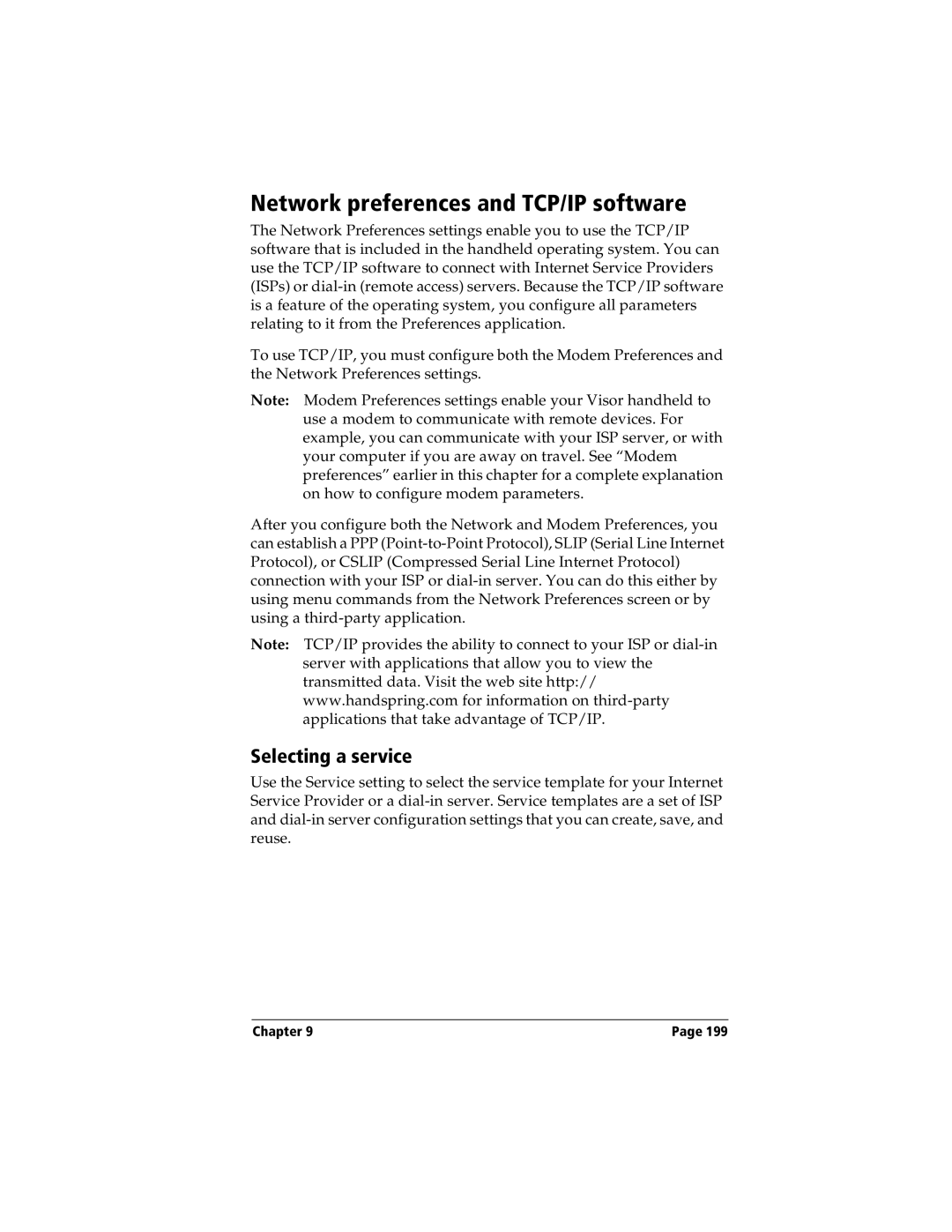Network preferences and TCP/IP software
The Network Preferences settings enable you to use the TCP/IP software that is included in the handheld operating system. You can use the TCP/IP software to connect with Internet Service Providers (ISPs) or
To use TCP/IP, you must configure both the Modem Preferences and the Network Preferences settings.
Note: Modem Preferences settings enable your Visor handheld to use a modem to communicate with remote devices. For example, you can communicate with your ISP server, or with your computer if you are away on travel. See “Modem preferences” earlier in this chapter for a complete explanation on how to configure modem parameters.
After you configure both the Network and Modem Preferences, you can establish a PPP
Note: TCP/IP provides the ability to connect to your ISP or
Selecting a service
Use the Service setting to select the service template for your Internet Service Provider or a
Chapter 9 | Page 199 |
